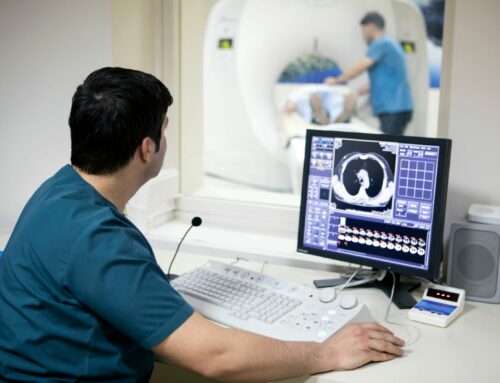By Andrea Kowalski, Senior Vice of Product at Tebra |

As private practices across the nation face demanding regulatory requirements, changing reimbursements, and increasing operational costs, many providers struggle to balance patient care and the administrative burdens of practice management. As practices adapt to the changing healthcare landscape, technology is at the forefront of creating a better patient experience and helping providers balance their clinical and administrative workload. Electronic health records (EHRs) are one of the most impactful tools in boosting productivity and simplifying the administrative workload.
EHRs promote better patient outcomes, reduce medical mistakes, and lower expenses for patients and providers. According to the CDC, 89.9 percent of office-based physicians use an EHR system. Having the right software and procedures in place can ensure that you maximize productivity.
A Repository of Data and Analytics
EHR dashboards can visually present clinical and administrative data, giving quick access to a broader picture. From a patient perspective, the clinical team can review patient care with real-time updates, including streamlined patient charting, convenient labs, and flow sheets to monitor a patient’s critical health data over time.
From an administrative perspective, a complete EHR will help minimize repetitive administrative tasks by streamlining workflows with scheduling, patient communications, managing internal documents, and billing. In addition, dashboards allow you to quickly capture and review the outstanding items for the day and the schedule ahead, empowering practices to prioritize and better manage day-to-day activities. For confidentiality, permission controls can extend or deny access to sensitive information based on which user is attempting to access it.
Improved Patient Care
Patients want to be more involved and proactive in their care and treatment plans. An effective EHR provides more patient and provider interaction inside and outside the treatment room. For example, through secure messaging and document sharing, patients can access their medical records and message their care team with questions or updates. Inside the treatment room, doctors can view a complete picture of a patient’s treatment across providers and specialties to better coordinate care and follow-up. In addition, patient data visualization helps providers plan care and streamline clinical decision-making, especially when preventing, screening for, and managing chronic diseases.
When it comes to managing prescriptions, e-Prescribing fosters safer prescribing practices that account for the entirety of a patient’s prescribing history, ensuring that providers are not overprescribing controlled substances. In addition, e-Prescribing eliminates the risk of medication errors due to legibility. Each year, 7K people are killed, and 1.5M are injured due to poor physician handwriting on paper prescriptions.
With its administrative management capabilities, clinical quality control, data analytics, and enhanced patient engagement tools, EHRs improve the care physicians provide to their patients. Investing the time into familiarizing themselves with these features will allow providers to improve patient outcomes.
Expediting Billing While Improving Accuracy
Of the practices currently utilizing an EHR system, 74 percent report experiencing faster and more accurate billing. The ability to capture care and the related charges in the treatment room increases the accuracy of recording and billing for care provided. You can eliminate errors and downtime in transcribing and updating medical records post-treatment. The right EHR is fully integrated and will improve your medical billing cycle and drive revenue.
Practices utilizing an EHR without the modern features that enable billing aid should consider upgrading their system. Finding a comprehensive product that supports billing capabilities and works well for clinicians is vital. A system that works well for clinicians but slows up billing won’t be much use in the long run.
Maximize EHR Impact
An EHR system can only be as functional as the practice staff allows it to be. Independent practices looking to reap the benefits of their EHRs must fully commit to utilizing the dashboard and refrain from reverting to previous habits. By succumbing to the comfort of old tactics, your practice will likely miss out on the convenience of operational overviews and dashboard consolidation.
Optimize your EHR by configuring your EHR to meet the needs of your practice and address user difficulties through training and customization. An EHR is an investment and commitment. The benefits and ROI of improved patient care and business outcomes outweigh the initial investment in the right system. Digital transformation is critical to thriving independent practices as we enter a new era of healthcare.
About The Author
 Andrea Kowalski is the Senior Vice of Product at Tebra. Andrea is an inspired, customer-focused senior executive with proven success building robust, scalable organizations, high-caliber teams, and industry-leading products. She has created teams from the ground up, entered new markets, reimagined existing organizations and processes, and developed products that pushed boundaries and opened doors for customers in the U.S. and overseas.
Andrea Kowalski is the Senior Vice of Product at Tebra. Andrea is an inspired, customer-focused senior executive with proven success building robust, scalable organizations, high-caliber teams, and industry-leading products. She has created teams from the ground up, entered new markets, reimagined existing organizations and processes, and developed products that pushed boundaries and opened doors for customers in the U.S. and overseas.











